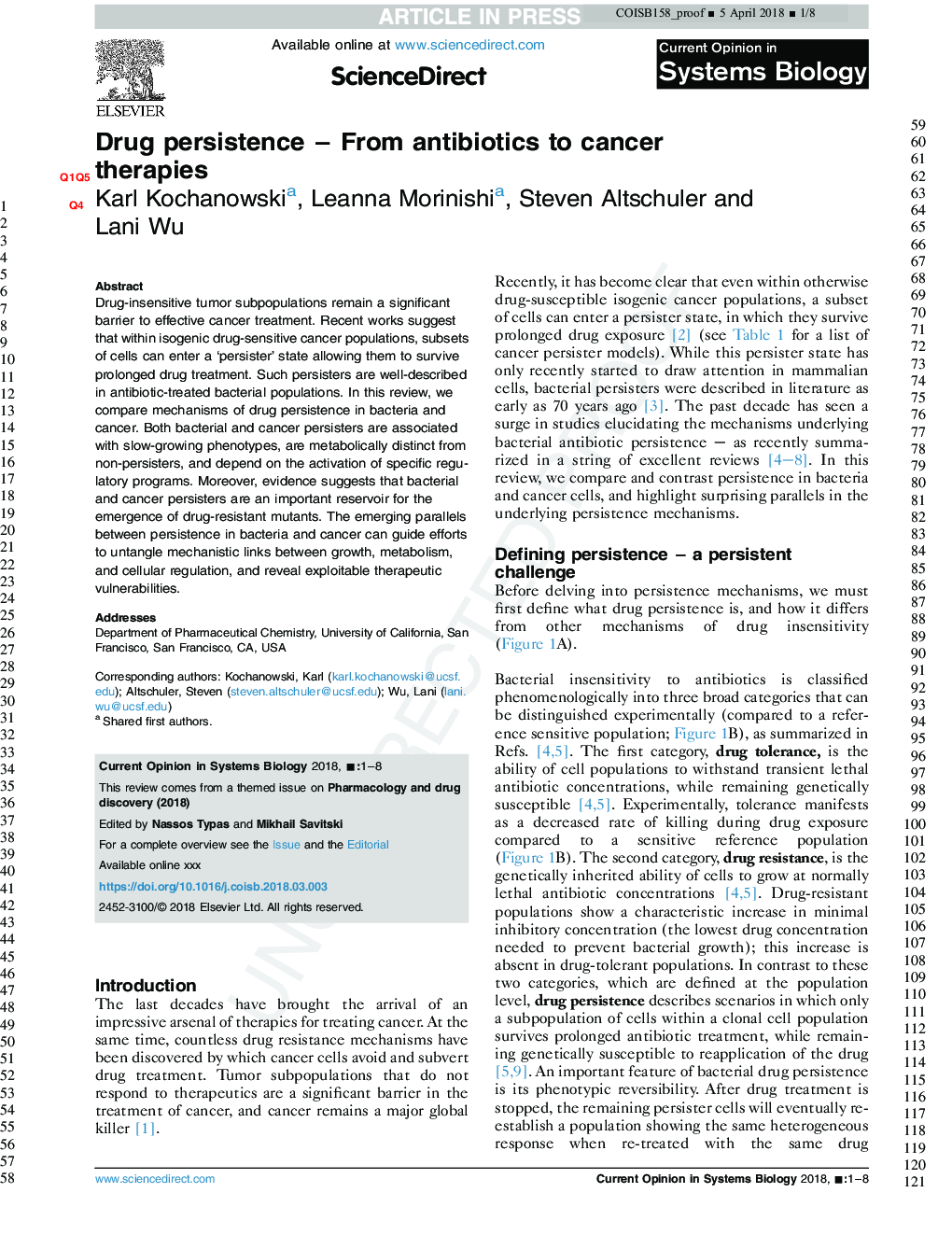| Article ID | Journal | Published Year | Pages | File Type |
|---|---|---|---|---|
| 8918023 | Current Opinion in Systems Biology | 2018 | 8 Pages |
Abstract
Drug-insensitive tumor subpopulations remain a significant barrier to effective cancer treatment. Recent works suggest that within isogenic drug-sensitive cancer populations, subsets of cells can enter a 'persister' state allowing them to survive prolonged drug treatment. Such persisters are well-described in antibiotic-treated bacterial populations. In this review, we compare mechanisms of drug persistence in bacteria and cancer. Both bacterial and cancer persisters are associated with slow-growing phenotypes, are metabolically distinct from non-persisters, and depend on the activation of specific regulatory programs. Moreover, evidence suggests that bacterial and cancer persisters are an important reservoir for the emergence of drug-resistant mutants. The emerging parallels between persistence in bacteria and cancer can guide efforts to untangle mechanistic links between growth, metabolism, and cellular regulation, and reveal exploitable therapeutic vulnerabilities.
Related Topics
Physical Sciences and Engineering
Computer Science
Computer Science (General)
Authors
Karl Kochanowski, Leanna Morinishi, Steven J. Altschuler, Lani F. Wu,
